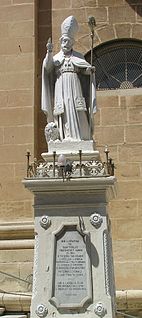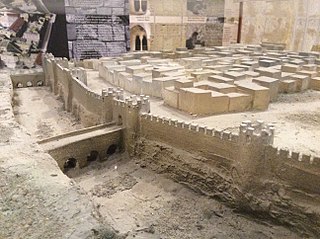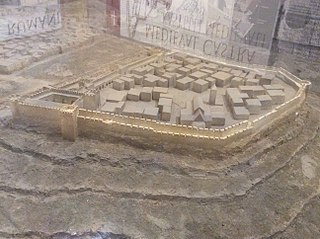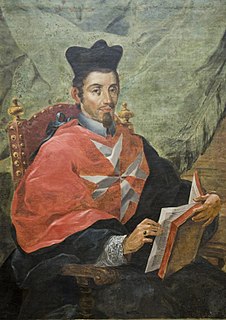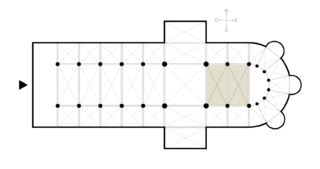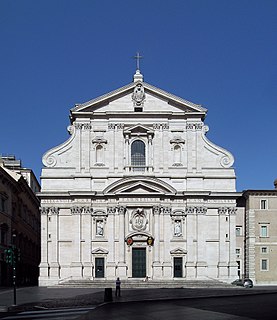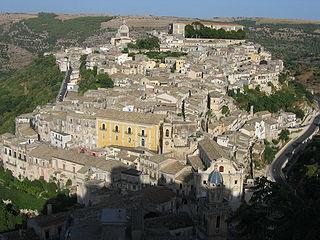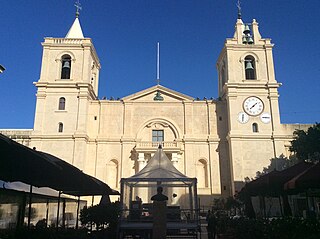| Saint Paul's Cathedral | |
|---|---|
| Metropolitan Cathedral of Saint Paul | |
| Mdina Cathedral | |
Il-Katidral Metropolitan ta' San Pawl | |
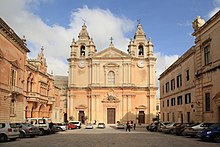 View of St. Paul's Cathedral | |
| 35°53′11″N14°24′14″E / 35.88639°N 14.40389°E Coordinates: 35°53′11″N14°24′14″E / 35.88639°N 14.40389°E | |
| Location | Mdina |
| Country | Malta |
| Denomination | Roman Catholic |
| Website | metropolitanchapter.com |
| History | |
| Status | Cathedral |
| Founded | 12th century |
| Dedication | Paul the Apostle |
| Consecrated | 8 October 1702 |
| Architecture | |
| Functional status | Active |
| Architect(s) | Lorenzo Gafà |
| Style | Baroque |
| Years built | 1696–1705 |
| Specifications | |
| Materials | Limestone |
| Administration | |
| Archdiocese | Archdiocese of Malta |
| Clergy | |
| Archbishop | Charles Scicluna |
| Archpriest | Anthony Cassar |
The Metropolitan Cathedral of Saint Paul (Maltese : Il-Katidral Metropolitan ta' San Pawl), commonly known as St. Paul's Cathedral or the Mdina Cathedral, is a Roman Catholic cathedral in Mdina, Malta, dedicated to St. Paul the Apostle. The cathedral was founded in the 12th century, and according to tradition it stands on the site of where Roman governor Publius met St. Paul following his shipwreck on Malta. The original cathedral was severely damaged in the 1693 Sicily earthquake, so it was dismantled and rebuilt in the Baroque style to a design of the Maltese architect Lorenzo Gafà between 1696 and 1705. The cathedral is regarded as Gafà's masterpiece.
Maltese is the national language of Malta and a co-official language of the country alongside English, while also serving as an official language of the European Union, the only Semitic language so distinguished. Maltese is descended from Siculo-Arabic, the extinct variety of Arabic that developed in Sicily and was later introduced to Malta, between the end of the ninth century and the end of the twelfth century.

A cathedral is a church that contains the cathedra of a bishop, thus serving as the central church of a diocese, conference, or episcopate. Churches with the function of "cathedral" are usually specific to those Christian denominations with an episcopal hierarchy, such as the Catholic, Anglican, Orthodox, and some Lutheran and Methodist churches. Church buildings embodying the functions of a cathedral first appeared in Italy, Gaul, Spain and North Africa in the 4th century, but cathedrals did not become universal within the Western Catholic Church until the 12th century, by which time they had developed architectural forms, institutional structures and legal identities distinct from parish churches, monastic churches and episcopal residences.
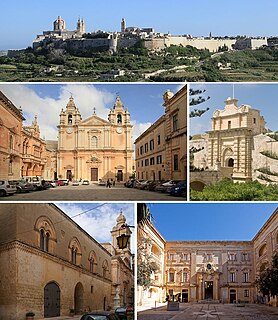
Mdina, also known by its titles Città Vecchia or Città Notabile, is a fortified city in the Northern Region of Malta, which served as the island's capital from antiquity to the medieval period. The city is still confined within its walls, and has a population of just under 300, but it is contiguous with the town of Rabat, which takes its name from the Arabic word for suburb, and has a population of over 11,000.
Contents
- History
- Architecture
- Exterior
- Interior
- Cathedral Museum
- See also
- References
- Bibliography
- External links
The cathedral is the seat of the Roman Catholic Archdiocese of Malta, and since the 19th century this function has been shared with St. John's Co-Cathedral in Valletta.

The Archdiocese of Malta is a metropolitan archdiocese of the Latin Rite of the Catholic Church in Malta.

Valletta is the capital city of Malta. Located in the south east of the island, between Marsamxett Harbour to the west and the Grand Harbour to the east, its population in 2014 was 6,444, while the metropolitan area around it has a population of 393,938. Valletta is the southernmost capital of Europe.

